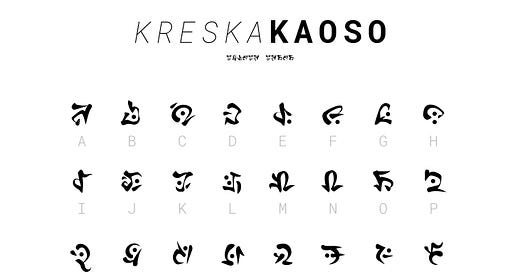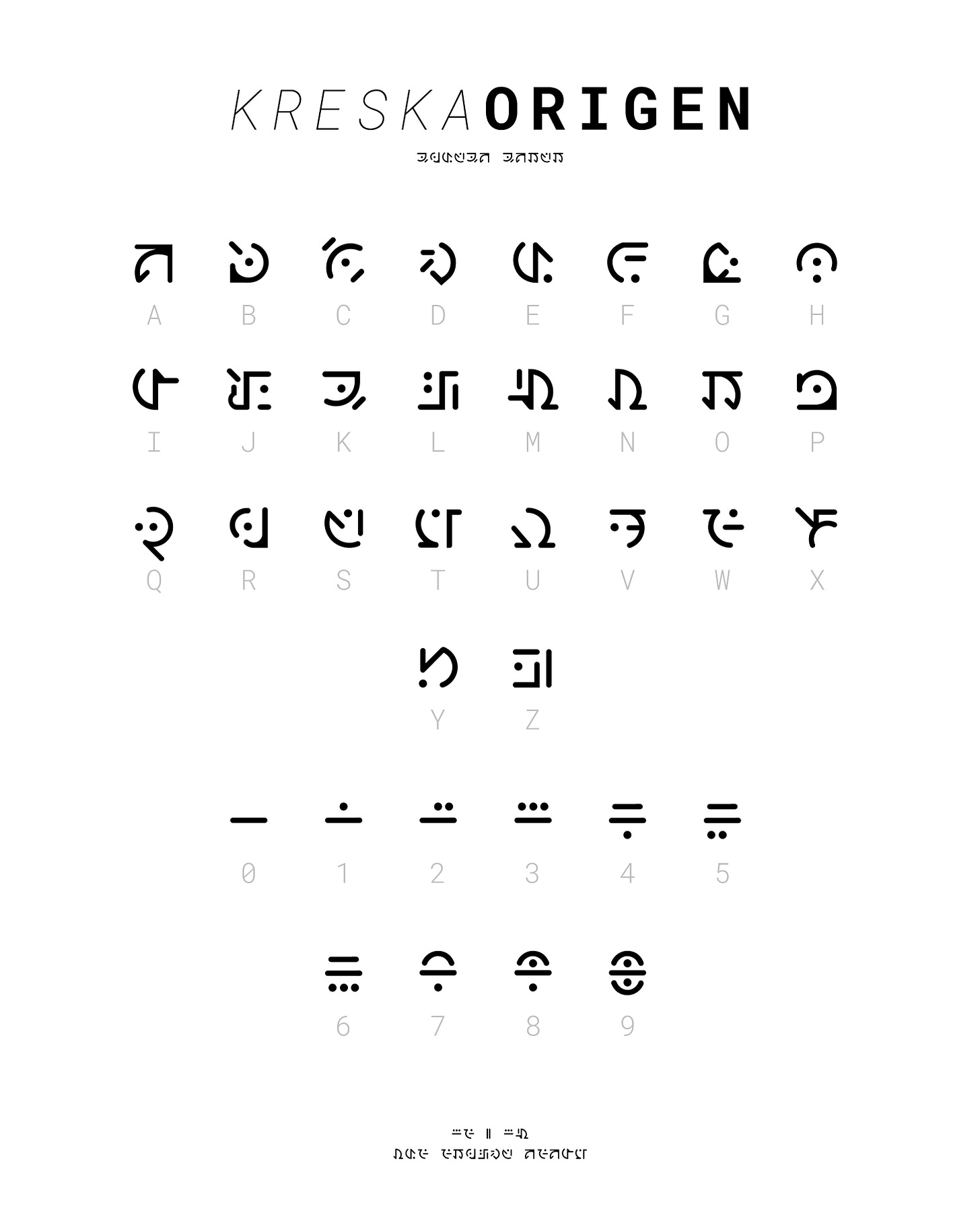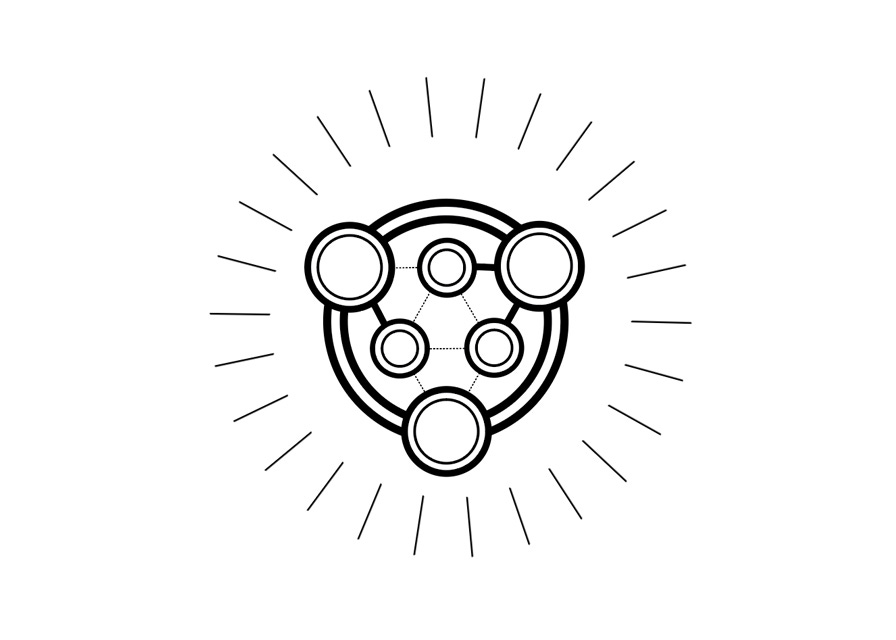Happy Holidays from all of us at 3W/3M. We hope it’s a good one. To help you celebrate, we wanted to prepare a little gift for you. But first, a reminder: we’re currently offering 20 percent off all new annual subscriptions. So if you’re on the free or monthly list, and you just got a little Christmas bonus, this is the perfect time to upgrade.
Now, here’s Jonathan…
Originally, I had decided that I was just going to do gibberish symbols for all of 3W3M because I had created substitution ciphers for my last three books (and I think that’s enough of that nonsense), but when I asked Sasha where she wanted to start on design stuff she said she wanted to do fonts.
Super.
So I said, let’s see what you’ve got. Then Sasha proceeded to steal my gimmick and beat me to death with it.
- JH
(And here’s an edited version of our email conversation game planning this stuff).
JH: Okay, so the idea that we’re running with here is that there’s only one language in the universe. A shared linguistic history on all three worlds and all three moons which means that, basically, everyone is speaking the same thing. The difference is in how each world or moon has a stylized variations in how the alphabet (and probably pronunciation/spelling/etc) is rendered. Right?
SH: Yep. The alphabet itself is called Kreska (phonetic spelling). The first font is called Origen. Origen is the basic font for everyone... what you might see in newspapers, inter-planetary formal missives, it's like Helvetica or whatever. Just the basic letterforms.
JH: Cool. And the plan is to do one for everything? One for each planet and moon?
SH: Origen is definitely the most basic on Therra. But depending on what Cycle the world is in, Therra's font might look a little bit more like Ordo, or a little bit like Kaoso... But yeah. They all start at Origen, on Therra.
JH: Gotcha.
SH: I'd like to do something slightly different specifically for current-time Ordo (which would basically be like Origen, but more angular, maybe completely monospaced, more squares than circles and rounded forms), as opposed to what I did for Kaoso. Which took me a while because I hand wrote them and then vector traced it.
JH: Yeah, but look at the results. Totally worth it. Okay, let’s put Ordo on the back burner for right now because we’ve got to do all the web design stuff. Then you can finish that and jump into book design. Sound good?
SH: Yep. Then after that I want to do Akva and Fayrii+Heir. Complete the set.
JH: Okay. That’s the plan.
And so, thanks to Sasha, here are the first two fonts for you guys. Do whatever you want with them. Use them together. Use them for peace.
Happy holidays.








These are beautiful! Sasha knocked these out of the park.
Does building a full conlang (constructed language, if anyone reading doesn’t know, like the various forms of Elvish in Lord of the Rings) interest you guys at all, or will things probably stick with the substitution cyphers?
I love the storytelling present in the various forms of Kreska. If I can go off a bit, one of the coolest parts of Tolkien’s conlangs is that (because he was a linguist by profession) he built history into his languages. You can track the way his various Elvish languages evolved from a proto-Elvish, or how that split off into orkish, or the origin of Dwarvish. In fact, this goes into the very proper nouns of the series. The names of characters and places have (in Tolkien’s universe) been “translated” into English. In universe, Frodo Baggins would tell you his name was Maura Labingi. Frodo is the “translation” of that into English. This is all peak nerdery, I know, but I’m fascinated by the depth of thought put into Tolkien’s world.